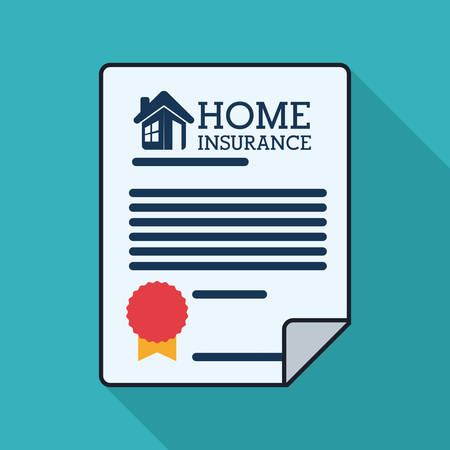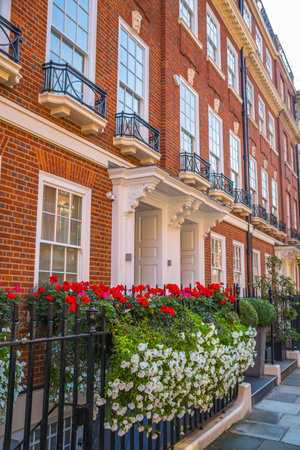Understanding Listed Buildings and Non-Standard Properties
When it comes to home insurance in the UK, not all properties are created equal. Listed buildings and non-standard properties require special consideration due to their unique characteristics. A listed building is officially recognised as having historical or architectural significance, often constructed with traditional materials such as stone, thatch, or timber framing. These properties are protected by law, and any alterations or repairs must comply with strict regulations to preserve their original features. On the other hand, non-standard properties refer to homes that don’t fit the typical mould—think of houses with flat roofs, timber frames, or unconventional construction methods and materials. Both listed and non-standard properties can present challenges when securing home insurance, primarily because their restoration costs tend to be higher and require specialist expertise. Understanding what sets these homes apart is the first step in finding the right cover to protect your investment.
Unique Insurance Challenges
Insuring listed buildings and non-standard properties in the UK comes with a unique set of challenges that homeowners need to be aware of. Unlike conventional homes, these properties often require specialist knowledge and tailored cover due to their age, construction, and legal restrictions. Below is a breakdown of the main risks and difficulties associated with obtaining home insurance for these distinctive homes:
1. Higher Repair and Restoration Costs
Listed buildings are often constructed from materials or using techniques that are no longer commonly used. If your property is damaged, insurers may need to cover the cost of sourcing specialist tradespeople and authentic materials. This can make repairs much more expensive compared to standard properties.
2. Specialist Materials and Workmanship
The use of bespoke or period-specific materials means you cant always rely on off-the-shelf solutions. For example, replacing a Georgian sash window or repairing a thatched roof requires craftsmen with specific skills, which can push up both the time and cost required for repairs.
3. Legal Restrictions and Listed Status
Properties that are Grade I, II*, or II listed come under strict regulations enforced by local authorities. Any alterations or repairs must comply with heritage requirements, which can delay work and increase costs. In some cases, you might even need special consent before starting any repair or restoration work.
Comparison Table: Standard vs Listed/Non-Standard Property Insurance Challenges
| Aspect | Standard Homes | Listed/Non-Standard Homes |
|---|---|---|
| Repair Costs | Generally lower; modern materials widely available | Often higher; specialist skills & materials needed |
| Legal Restrictions | Minimal; standard building regulations apply | Strict; listed status dictates repair methods/materials |
| Availability of Tradespeople | Widespread access to general contractors | Limited pool of qualified specialists required |
| Approval Process for Works | Straightforward; rarely needs special permission | Can be lengthy; listed building consent often needed |
Summary: Is It Worth It?
If youre drawn to the charm and history of a listed or non-standard property, be prepared for extra responsibilities when it comes to insurance. The potential for higher premiums, complicated claims processes, and stricter rules means its essential to understand what makes your home unique—and ensure you have the right cover in place from a provider experienced in this niche market.

3. Key Features of Specialist Home Insurance
When it comes to home insurance for listed buildings and non-standard properties in the UK, the policy features are tailored to address the unique risks and requirements these homes present. Unlike standard cover, specialist insurance offers an array of essential protections designed specifically for heritage and unusual properties. One of the most important aspects is bespoke rebuilding cover, which reflects the true cost of restoring or repairing your home using traditional materials and methods—often necessary to meet strict conservation regulations.
Another key feature is alternative accommodation. If your home becomes uninhabitable due to an insured event, specialist policies typically provide generous allowances for alternative living arrangements that suit your needs and maintain your lifestyle during repairs—a particularly valuable benefit given the potential length and complexity of restoration work on older or architecturally significant buildings.
Additionally, these policies often include protection for outbuildings, period features, and bespoke fittings that would be costly or impossible to replace under standard insurance. You may also benefit from coverage for legal expenses relating to planning permissions or disputes, accidental damage tailored to delicate fixtures, and public liability protection suited to properties open to visitors, such as those occasionally used for events or filming.
Ultimately, specialist home insurance gives you peace of mind by ensuring that every aspect of your unique property is considered—from the slate on the roof right down to the original wooden floors—so you’re not left footing a hefty bill if disaster strikes.
4. Tips for Saving on Premiums
Insuring listed buildings or non-standard properties in the UK can be costly, but with a few practical steps, you can reduce your premiums without sacrificing essential cover. Here are some everyday money-saving tips tailored to these unique homes:
Improve Your Property’s Security
Insurance providers often reward homeowners who take steps to minimise risk. Upgrading your security is a straightforward way to lower premiums:
| Security Measure | Potential Savings | Notes |
|---|---|---|
| Install approved locks (BS3621) | 5-10% | Required by many insurers |
| Burglar alarm (NSI/SSAIB certified) | Up to 10% | Certification may be necessary for discount |
| Security lighting and cameras | Varies | Reduces risk of break-ins; inform your insurer |
| Neighbourhood Watch membership | Small discount | Some insurers recognise local schemes |
Increase Your Voluntary Excess
By agreeing to pay a higher voluntary excess if you make a claim, you can often reduce your monthly or annual premium. Just make sure the excess amount remains affordable should you need to use it.
Example:
| Voluntary Excess (£) | Typical Premium Reduction (%) |
|---|---|
| 100 | – |
| 250 | 5-8% |
| 500+ | 10% or more |
Compare Specialist Providers and Policies
Mainstream insurance companies might not offer the best value or cover for listed and non-standard properties. It pays to shop around:
- Use comparison sites that include specialist insurers.
- Request quotes directly from brokers who understand heritage or unusual homes.
- Check for bundled deals (buildings + contents) and loyalty discounts.
- Review policy exclusions carefully – don’t just go for the cheapest option!
Lifestyle Adjustments That Help Lower Costs
Avoiding claims where possible keeps your no-claims discount intact. Simple habits like regular property maintenance, prompt repairs to roofs and gutters, and installing smoke detectors all help prevent issues that could lead to higher future premiums.
Key Takeaway:
The best way to manage home insurance costs for listed buildings or non-standard homes in the UK is a combination of improving your security, adjusting your voluntary excess sensibly, and doing thorough research among specialist providers. A bit of effort upfront can mean significant savings over the years!
5. Common Exclusions and Points to Watch
When arranging home insurance for listed buildings and non-standard properties in the UK, it’s crucial to pay close attention to common exclusions and the finer details hidden in policy documents. Insurers often have strict terms that could affect your cover, particularly given the unique features of these homes. One of the most frequent exclusions relates to unapproved alterations; if you have made changes to your property without obtaining the correct permissions from your local planning authority or conservation officer, insurers may refuse to pay out on a claim. This is especially relevant for Grade I, II*, or II listed buildings, where even minor modifications can require official consent.
Another important area to watch is the impact of modernisation on your cover. Some policies specifically exclude damage resulting from unauthorised updates, such as installing new windows, replacing original materials with modern alternatives, or significant structural changes that haven’t been approved. These exclusions are designed to protect the historical integrity of the property but can catch homeowners off guard if they’re not careful.
Always check whether your policy includes clauses about regular maintenance and upkeep. For example, failing to maintain the roof or external stonework might invalidate your cover for related damage. Similarly, certain risks—such as subsidence, flooding (particularly relevant in older properties with less robust foundations), or damage due to outdated wiring—may be excluded unless you pay for additional protection.
It’s also common for policies to limit cover during periods when the home is left unoccupied, which can be a concern for owners of second homes or those undertaking lengthy renovations. Make sure you understand how long your property can remain empty before restrictions kick in, as this varies between insurers.
Finally, always scrutinise the policy small print for any requirements regarding specialist repairs or approved contractors. Many insurers stipulate that restoration work must be carried out by professionals with experience in heritage buildings. Failing to comply with these conditions could jeopardise a future claim.
To avoid unwelcome surprises, take time to discuss all planned works with both your insurer and local authorities before proceeding. Reading through every section of your policy—even the boring bits—can save you money and stress down the line, ensuring your unique home is protected without unexpected gaps in cover.
6. How to Find the Right Insurer
When insuring a listed building or a non-standard property in the UK, it’s vital to choose an insurer who truly understands your home’s unique requirements. Not every provider is equipped to handle the complexities of historic or unconventional properties, so sourcing a reputable insurer is key.
Seek Specialist Providers
Start by looking for insurance companies with a proven track record in covering listed buildings and non-standard homes. Mainstream insurers may not offer adequate protection or might charge higher premiums due to perceived risks. Instead, consider niche providers that specialise in heritage or unusual properties—they’re more likely to appreciate your home’s intricacies and offer tailored policies.
Ask the Right Questions
When contacting potential insurers, be prepared with specific questions:
- Do you cover Grade I, II*, or II listed buildings?
- How do you assess the rebuild cost for historic materials and craftsmanship?
- Are there exclusions relating to period features or construction methods?
- What support do you provide if I need to make repairs in line with conservation regulations?
- Is accidental damage to original features included as standard?
Asking these questions helps ensure you’re not caught out by gaps in cover or unexpected exclusions.
The Value of Working With Brokers
Brokers who specialise in listed properties can be invaluable. They have access to a wide range of specialist insurers and understand the nuances involved with non-standard homes. A good broker will help you compare quotes, decipher policy small print, and advocate on your behalf should you ever need to claim. This expertise can save you both time and money, ensuring your home gets the right level of protection without overpaying for unnecessary extras.
Final Tips
Always check reviews and ratings of any insurer or broker you’re considering—sites like Defaqto or Trustpilot are useful resources. Make sure they’re authorised by the Financial Conduct Authority (FCA) for extra peace of mind. By taking these steps, you can confidently secure comprehensive home insurance tailored to your listed or non-standard property, keeping your investment safe for years to come.

